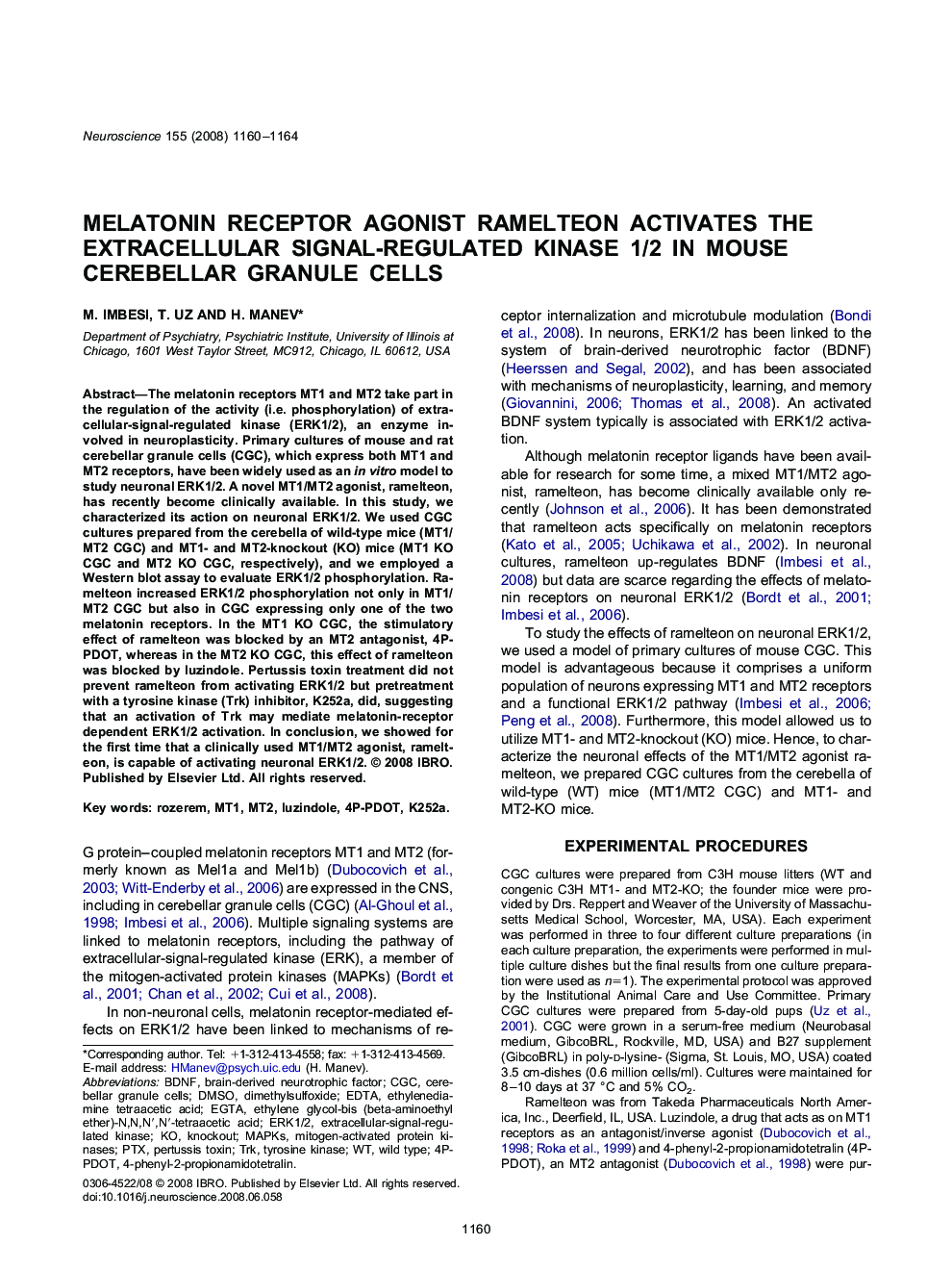| Article ID | Journal | Published Year | Pages | File Type |
|---|---|---|---|---|
| 4340583 | Neuroscience | 2008 | 5 Pages |
The melatonin receptors MT1 and MT2 take part in the regulation of the activity (i.e. phosphorylation) of extracellular-signal-regulated kinase (ERK1/2), an enzyme involved in neuroplasticity. Primary cultures of mouse and rat cerebellar granule cells (CGC), which express both MT1 and MT2 receptors, have been widely used as an in vitro model to study neuronal ERK1/2. A novel MT1/MT2 agonist, ramelteon, has recently become clinically available. In this study, we characterized its action on neuronal ERK1/2. We used CGC cultures prepared from the cerebella of wild-type mice (MT1/MT2 CGC) and MT1- and MT2-knockout (KO) mice (MT1 KO CGC and MT2 KO CGC, respectively), and we employed a Western blot assay to evaluate ERK1/2 phosphorylation. Ramelteon increased ERK1/2 phosphorylation not only in MT1/MT2 CGC but also in CGC expressing only one of the two melatonin receptors. In the MT1 KO CGC, the stimulatory effect of ramelteon was blocked by an MT2 antagonist, 4P-PDOT, whereas in the MT2 KO CGC, this effect of ramelteon was blocked by luzindole. Pertussis toxin treatment did not prevent ramelteon from activating ERK1/2 but pretreatment with a tyrosine kinase (Trk) inhibitor, K252a, did, suggesting that an activation of Trk may mediate melatonin-receptor dependent ERK1/2 activation. In conclusion, we showed for the first time that a clinically used MT1/MT2 agonist, ramelteon, is capable of activating neuronal ERK1/2.
